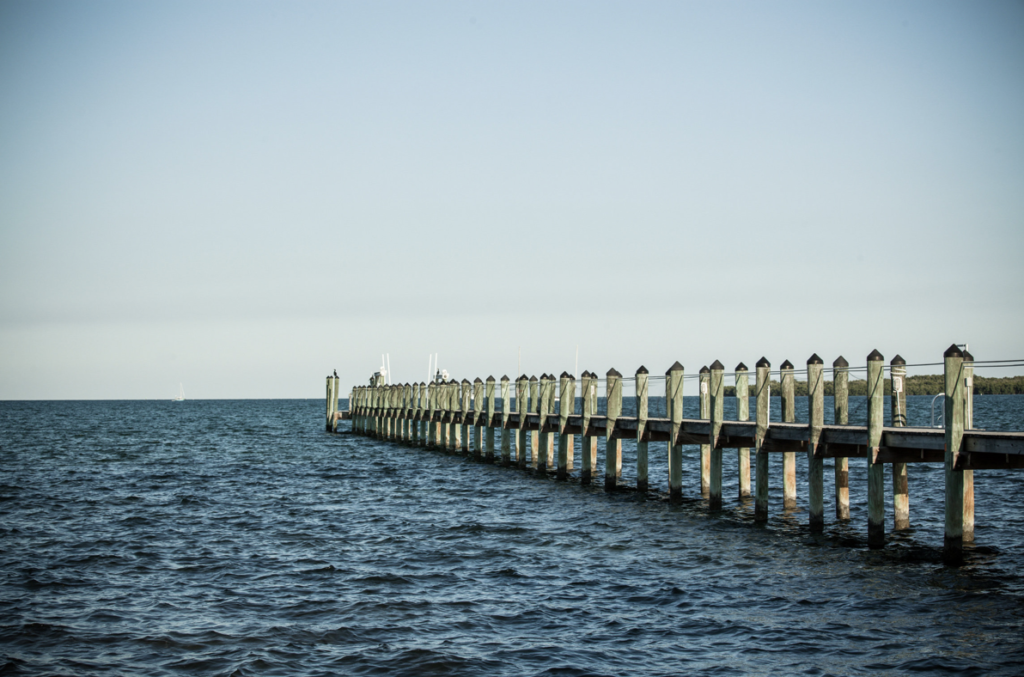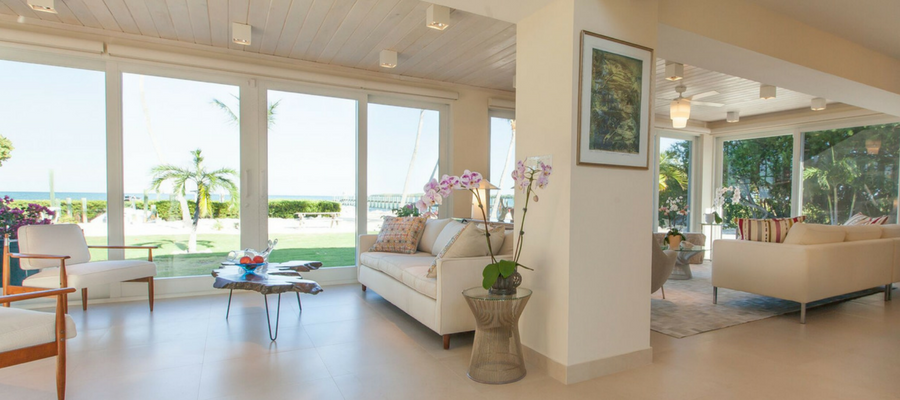Mid-Century Modern Furniture DESIGN WITH KEVIN GRAY
1. What are the characteristics of mid-century modern design in furniture?
Mid-century design in furniture was the transition from the traditional furniture prior to 1950 to open, airy, sleek lines and light upholstery. This was the beginning of cantilever style design. Also, mid-century furniture was the first to use molded laminated wood.
2. Why is mid-century modern furniture popular today?
How long has this recent trend lasted, and why? What trend did it replace? It is popular today for its comfort and lightness in look, spacious and works in new and old homes. You can put a Saarinen table and chairs in any Venetian palace and it would look just fine. The trend mid-century replaced was the bulky and heavy furniture of the Victorian times to the mid 50’s. Art Nouveau and then Art Deco also changed furniture styles but they never used molded fiberglass or wood to accommodate the human body.
3. What are the roots of the mid-century modern design movement?
The roots came from the new construction and the change in architecture; wood decks, cantilever ceilings, expansive terraces, living in the outdoors and the furniture revolved around that. Cross breezes through open-air design. Mid-century furniture was massed produced so it was accessible to everyday buyer. Prior to this period, furniture was custom made and for a certain class.
4. What are the benefits of this design trend over other movements?
Mid-century modern design furniture gives a lighter and airier feel to a room or the entire home, as well as the price point. There are more advantages than disadvantages. It is basically just about personal taste.
5. What tips do you have for homeowners seeking mid-century modern furniture?
First, select a seating arrangement that works for your family and entertainment. Usually, there is a living area, office/den, dining room and kitchen. You might have a kitchen bar with bar stools. That is really one of the other modernizations in this time period. Also, this was the first time open kitchens came to be during this century. They should have sectional seating, swivel club chairs, bar stools, and an entertainment wall – the Danish played a big role in this by making one wall in teak. Famous architects like Philip Johnson and Mis Van De Rohe used and mass produced the teak wall.
6. What should homeowners consider when choosing mid-century modern furniture?
You have to mix it to get a good customized feel. By all means, avoid copies. They don’t last. Pick furniture that works for the house, the view, the flow, the light.
7. How long will this design trend continue to last? What do you predict will replace it and when?
The good pieces last forever. The Museum of Modern Art (MOMA) is still selling mid-century the Bauhaus also as the furniture. The Seagram’s building auction was the first to bring record sales of $4million dollars selling off their mid-century modern furniture.
8. Any other thoughts, tips or suggestions on this topic?
Mix and match your pieces or your home will look like a showroom.
PORTFOLIO SPOTLIGHT ON MID-CENTURY DESIGN:
Mid-Century Oceanfront in Tavernier Key in Key Largo, Florida
Tavernier Key in Key Largo, Florida offers residents an endless summer with breathtaking views. Kevin Gray Design’s Tavernier clients enjoy daily views of blue skies, turquoise seas, and swaying palms while sipping coffee each morning on their balcony.
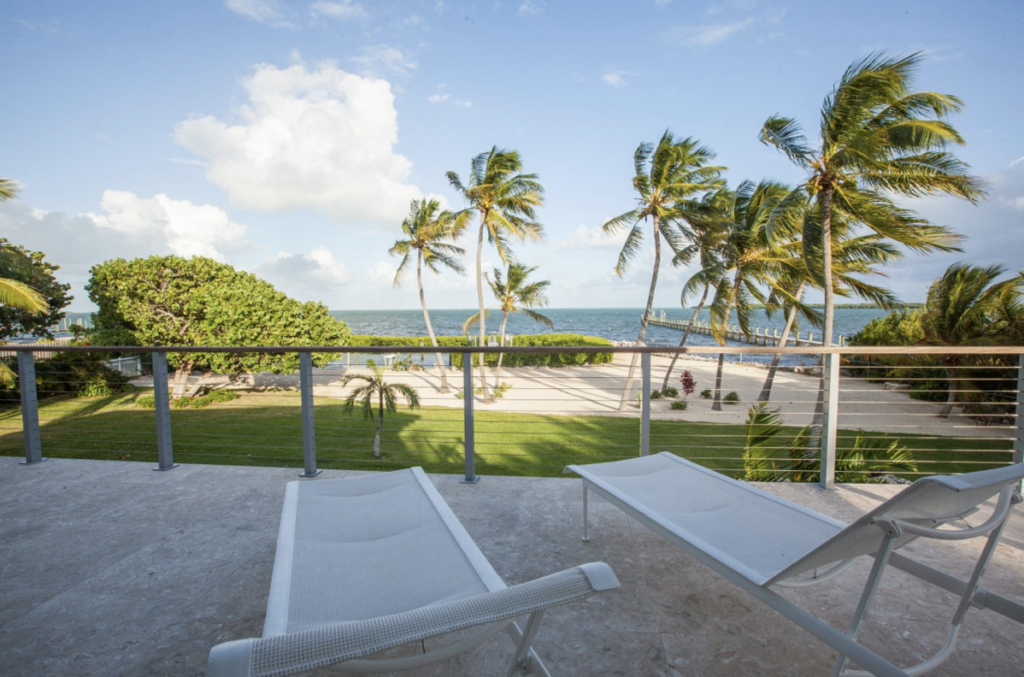
This 1950s Florida Keys home was stripped of its 1980s alterations and restored to its mid-century splendor while incorporating the beach elements of the Florida Keys.
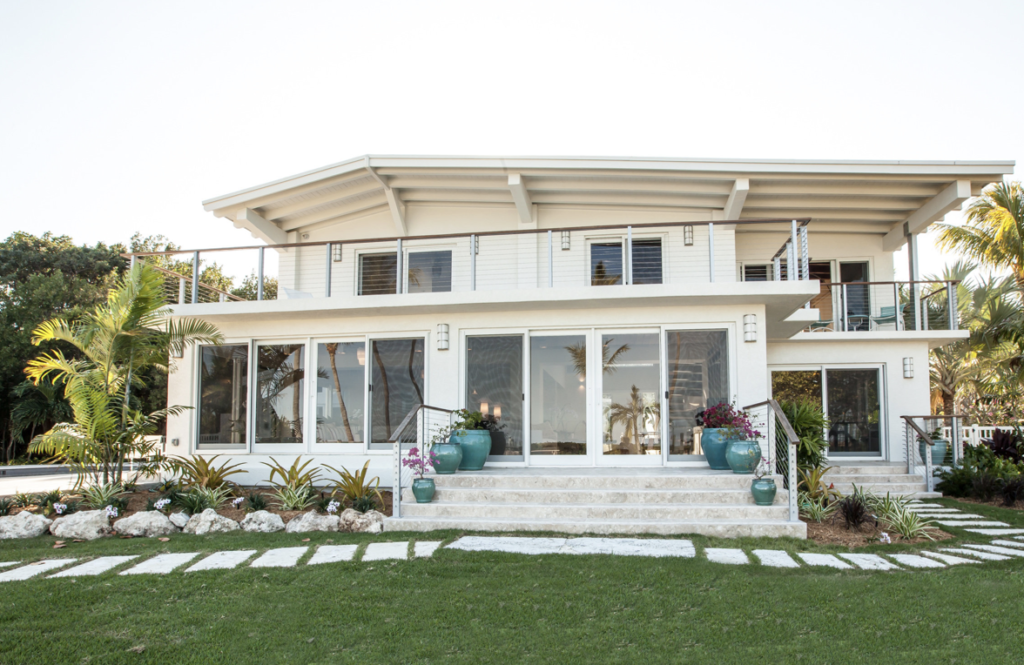
The flooring was replaced with sandstone porcelain throughout the entire home. The living room was filled with beige and soft colored furniture matching the color of Key Largo’s beaches. The furniture was placed to face the backyard, towards incredible views of the ocean – living in the outdoors is a key feature of mid-century design.
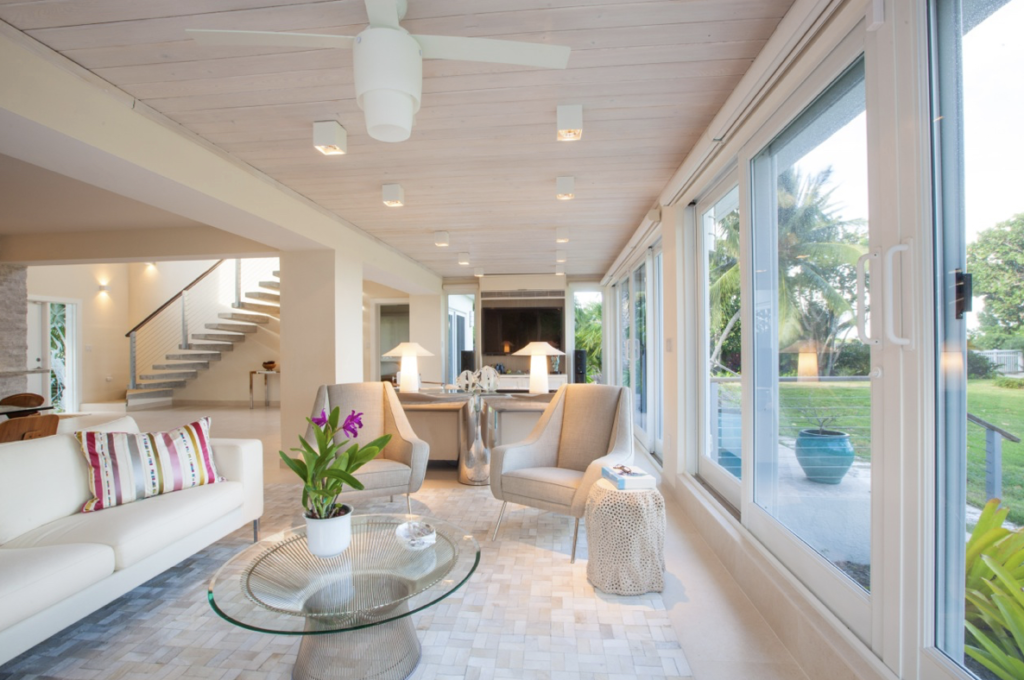
Kevin transformed the kitchen with lacquer, light wood, and bar stools, and opened the kitchen to flow into the dining room, furnished with Danish teak chairs. The glass finish underneath the cabinetry mimics the calming ocean you can see from most rooms in the house.
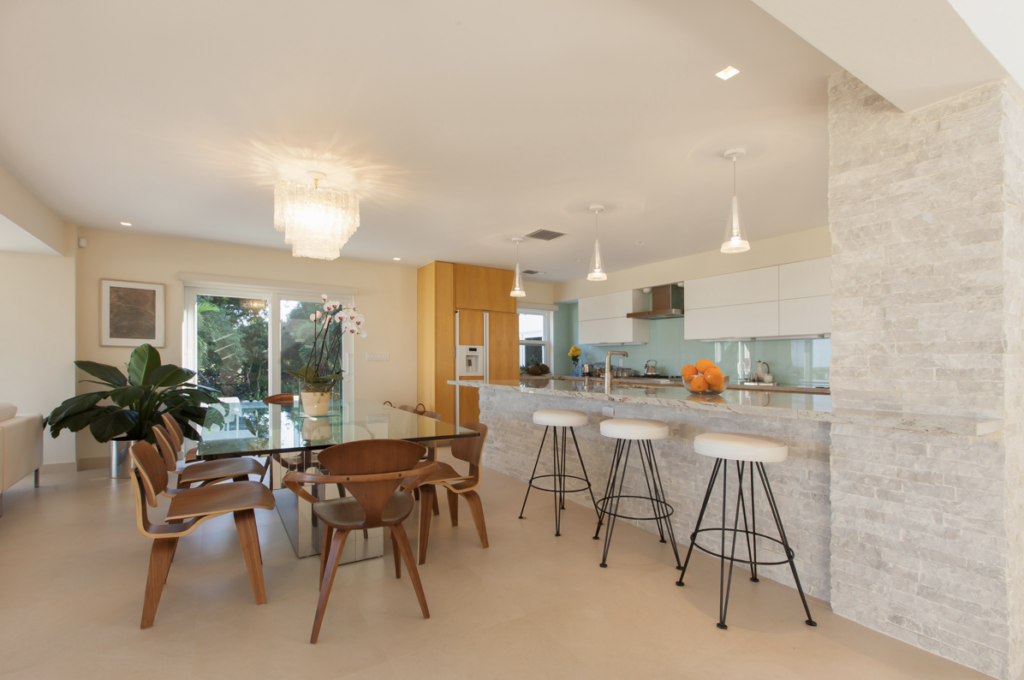
The master bathroom imitates the ocean with light blue and green glass stacked brick tile creating an underwater effect.
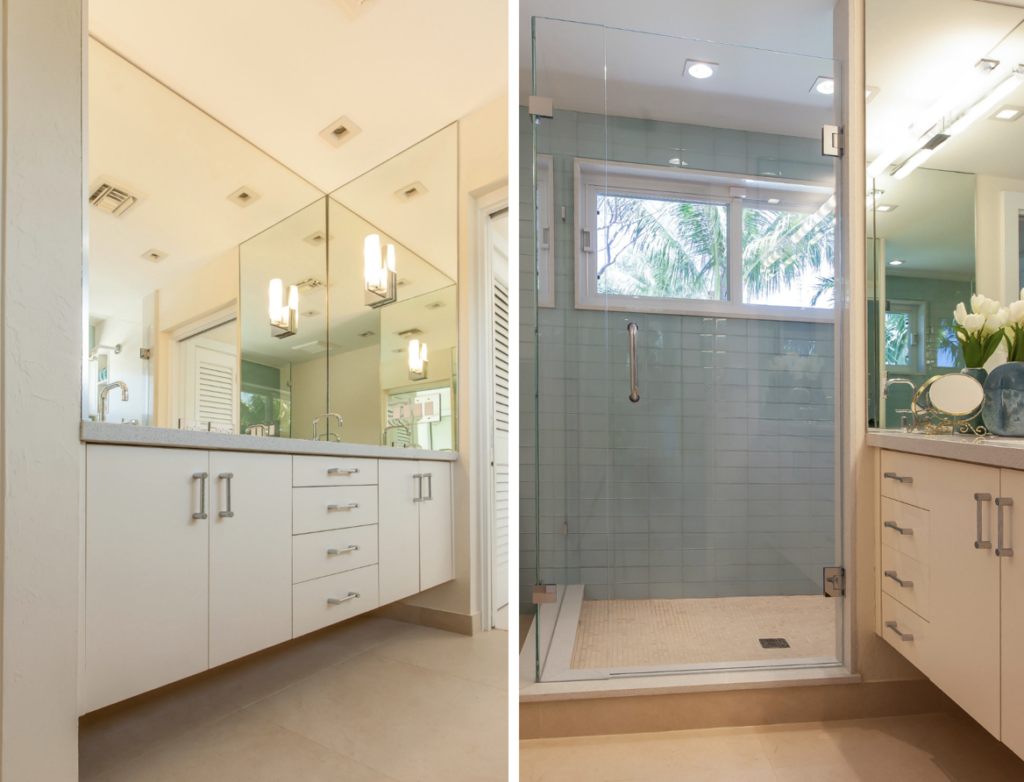
The stairway was stripped of tile and heavy wooden colonial handrails to expose the structure. The handrails were replaced with custom steel and teak. At the top of the staircase, there is a TV room filled with mid-century furniture, a nod to the home’s 1950s glory.

This Florida home was restored to its mid-century roots to highlight the beauty that surrounds it – a reminder that we should all take a moment to appreciate the view.
